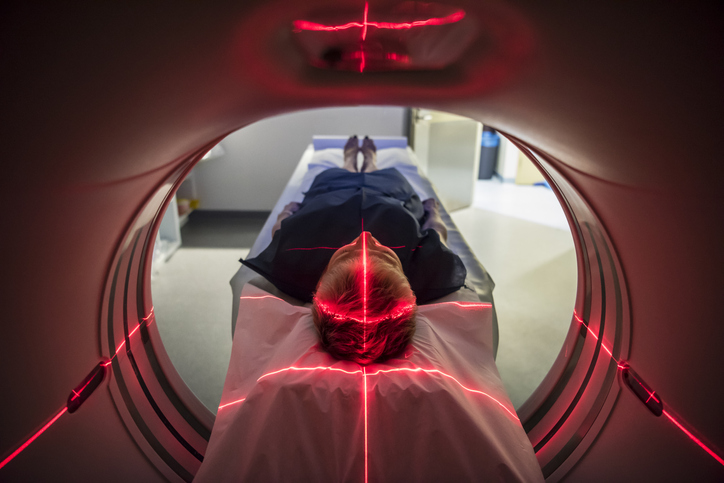Pain
What Is Failed Back Surgery Syndrome?

Failed back surgery syndrome (FBSS) occurs when spinal surgery does not relieve back pain that was present before the surgery. FBSS does not necessarily mean a problem occurred during surgery; however, it does mean that one of the intended outcomes of the surgery — the reduction or elimination of pain — has failed.
An FBSS diagnosis requires that back pain is linked to spinal surgery. To be diagnosed with FBSS, the pain must continue, reoccur, or worsen after the expected healing time has elapsed, however, not after too much time has elapsed after the surgery that it could be caused by another health issue. For example, if an individual undergoes surgery for a herniated disc, then two years later develops back pain because the herniation recurs, they may be diagnosed with FBSS. If someone develops back pain 12 years after back surgery, it is highly unlikely that they will be diagnosed with FBSS.
Symptoms
The most common symptom of FBSS is chronic back or neck pain that develops or continues after the expected acute pain from surgery. Other symptoms include, but are not limited to, the following:
- Reduced mobility after the expected healing time
- Nerve pain
- Pain that radiates to other parts of the body, such as the legs or feet
- Return of original symptoms
- Development of new pain in the back or neck
- Development of headaches that were not present prior to the spinal surgery
If any of the following symptoms occur after spinal surgery, immediate medical attention is required:
- New weakness
- Difficulty walking
- Fever
- Vomiting
- Unintentional weight loss
- Loss of bowel or bladder function
Causes
The causes of failed back surgery syndrome are varied. The most common reasons that it occurs include the following:
- Poor candidate for surgery
The individual or condition may not have been appropriate for surgery, or the underlying condition may have been misdiagnosed. - Unnecessary surgery
In this case, the surgery not only fails to treat the underlying condition but may also cause more damage than was originally present. - Improper or inadequate surgery
This includes a technical error or mistake made during the surgery. - Recurrence of previous diagnosis
This does not mean that the surgery was a failure or that the diagnosis was incorrect. It simply means that the condition has returned despite the medical treatment. - Adjacent segment disease
After a fusion, the spinal segments above and below the fusion compensate for the fused spinal segment by moving more. This may cause these spinal segments to degenerate, become unstable, and cause pain. - Arachnoiditis
Inflammation of the arachnoid lining, one of the three linings that cover the spinal cord and brain, can occur after back or brain surgery. - Scar tissue problems
Scar tissue can form around the spinal nerve roots, which is medically known as epidural fibrosis. Spinal adhesions may also develop from the banding together of scar tissue. Spinal adhesions pull together tissues that are not supposed to be connected, causing pain and potential loss of mobility. - Post-surgical infection
Post-surgical infections occur in approximately 4% of all spinal surgeries. - Spinal instability
Instability of the spine can occur after spinal fusion or decompression surgeries. - Spinal instrumentation problems
Implanted instrumentation can become loose, infected, break or move. - Noncompliance of aftercare instructions
Failing to follow post-surgical care orders, such as continuing to smoke after a fusion, can lead to FBSS.
Risk factors
Surgery is often recommended if other conventional treatments for back pain are not successful. However, the success rate for back surgery is not uniform. Certain spine surgeries are associated with higher rates of developing FBSS. An accurate diagnosis and a good understanding of the success rate of a recommended spine procedure can help with the decision-making process.
Additional factors that may affect surgical success include the following:
- Obesity
- Regular smoking
- Pre-existing chronic conditions, such as fibromyalgia
- Emotional or mental health diagnoses
Multiple surgeries and FBSS
The biggest risk factor for developing FBSS is the number of back surgeries an individual has had. FBSS occurs between 5% and 40% after first-time back surgeries. This number varies based on the type of surgery, the individual’s risk profile, the quality of the surgical procedure, and the body’s reaction to the surgery.
The risk of developing FBSS increases for each surgery after the first:
- 50% occurrence after a second surgery
- 70% occurrence after a third
- 85% occurrence after a fourth
- 95% occurrence after a fifth
Because the success rate for back surgery decreases for each surgery after the first, it is important to consider both surgical and non-surgical treatments to manage back pain and other symptoms.
Non-surgical options, such as physical therapy, medication, and psychological practices, can help reduce pain. Less invasive back procedures, such as injection therapy or spinal cord stimulation, may also help relieve pain. One or a combination of these treatments may reduce back pain as effectively as a surgical procedure.
Additional sources: HealthCentral, MedCentral, HealthCentral, HealthCentral, HealthCentral
















